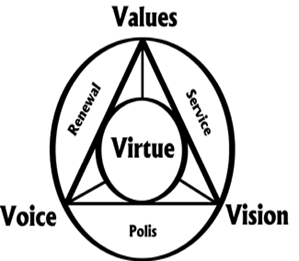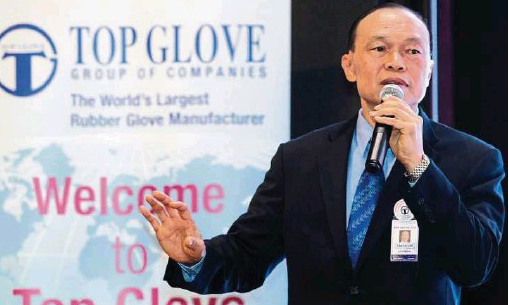 Source: BrainyQuote
Source: BrainyQuote
The past ten weeks of learning about leadership have benefit to me. Throughout the module, I had learnt many leadership skills and models, and able to differentiate for choosing leadership skill which most suits me. The leadership style that I prefer or I want to be is the transformational leadership. According to Burns (1978), transformational leadership is the leader and his followers help each other to achieve a higher level of motivation and morale.

Figure 1: Transformational Leadership Model (Murray 2015)
Current CEO in Microsoft, Satya Nadella is well-known for being a successful transformational leader. According to Evans (2017), Nadella realised the high demand of cloud service market, therefore he set a new vision for the organisation to engage in the cloud business. He came out some strategies and provide the way of achievement, therefore the team felt confidence and implemented them, resulted in Microsoft earned a $20 billion in 2017 (Cava 2017). Besides, Nadella believed in empathy, values, and trust (Hughes 2017). He looked into every level of the organisation, and propose some specific shifts in culture to improve. He also trusted his subordinates and encouraged them to drive out their values and strengths, so that the team felt motivated and giving their best (Barisso 2017). In addition, Nadella frequently took others’ feelings and perspective into consideration when in work, which helps to build up a loyal and trust relationship among the team, thus deliver a high-level job (Barisso 2017).
 Figure 2: Satya Nadella at the Microsoft Developers Build Conference (Simonite 2017)
Figure 2: Satya Nadella at the Microsoft Developers Build Conference (Simonite 2017)
Video 1: PayPal CEO and Microsoft CEO Share Insights on Leadership (2017)
In my current working environment, I believe that my department Deputy General Manager (DGM) is successful in leading the team. The implementation of Adair Model which always motivate the whole team had resulted in everyone happy and willing to work with him. Besides, he had also applied Kotter’s 8 steps model of change, which he encourages people to perform change and assign the right person to implement change. In addition, he will set a clear vision and develop a strategy to achieve the vision, then only express the vision to the team, to make sure that we are on the right direction. The reward system applied by him had motivated us to continuously achieve high performance. Both leaders discussed in the blog had inspired me and provide a clearer understanding of effective leadership, which I can learn and implement in future.
In order to become a transformational leader, Anderson (1998) stated that 3 shiftings are required to develop this leadership style, such as: style-shifting, role-shifting and skill-shifting. Style-shifting is the ability to make people change their personal style to achieve both target and demand. Role-shifting is the ability to figure out the suitable communication methods in right time, whereas skill-shifting is the ability to combine all different skills to accomplish every task.
A successful leader must become a risk-taker. Leader must always learn about calculating and taking risk, as well as continuously seek for improvement. According to Harvey (2017), when a leader is calculating the risks, he can predict the success rate and comes out some plans to avoid or overcome risks. Besides, a leader should recognise and admit his mistakes, because it is the opportunity to learn and gain knowledge (Llopis 2015).
Based on the test result from http://www.16personalities.com test, I realised my defender personality, which becomes one of the strengths when leading the team, as I can take care of my subordinates and give advice to them when facing any issues. However, I found out that my willingness to take risks is low, meaning that I resist changing. Therefore, it is necessary to learn about both risk and change management.
 Figure 3: Test Result from 16 Personalities Test (16personalities 2018)
Figure 3: Test Result from 16 Personalities Test (16personalities 2018)
Risk management can help me to identify the critical risks and come out corresponding solutions, whereas change management can increase employee engagement and sustainability of changes. Since there are some projects in my current workplace which require implementation of changes in the whole system, I can learn the ways of influencing others to change from my project manager. Seeking her way to deal with other stakeholders can gain me a lot of knowledge, thus improving my leadership skill.
Besides, according to peer review from teammates, I am not likely to encourage and provide confidence to other people, as well as lack of self-confidence. Therefore, I should learn about motivation skill, by foster collaboration within all team members and appreciate their ideas. Keeping the whole team happiness is also important as a leader, due to positive attitude and atmosphere will lead to high progress of works.
In conclusion, I strongly believe that leaders are made rather than born, therefore having a proper leadership skill is important to become an effective leader. In my MBA studies and workplace, I will continue to improve my leadership skill so that I can turn around to become a good leader in future.
(784 words)
Reference
Anderson, T. (1998). Transforming Leadership: Equipping Yourself and Coaching Others to Build the Leadership Organization. US: CRC Press.
Barisso, J. (2017) Microsoft’s CEO Sent An Extraordinary Email To Employees After They Committed An Epic Fail [online] available from <https://www.inc.com/justin-bariso/microsofts-ceo-sent-an-extraordinary-email-to-employees-after-they-committed-an-.html> [22 March 2018]
Burns, J. (1978) Transformational Leadership [online] available from <https://www.langston.edu/sites/default/files/basic-content-files/TransformationalLeadership.pdf> [22 March 2018]
Cava, M. (2017) Microsoft’s Nadella Hits Promised $20 Billion Cloud Milestone Months Early [online] available from <https://www.usatoday.com/story/tech/news/2017/10/26/microsofts-nadella-hits-promised-20-billion-cloud-milestone-months-early/804711001> [22 March 2018]
Evans, B. (2017) 10 Powerful Examples Of Microsoft CEO Satya Nadella’s Transformative Vision [online] available from <https://www.forbes.com/sites/bobevans1/2017/07/26/10-powerful-examples-of-microsoft-ceo-satya-nadellas-transformative-vision/#4636545d24fb> [22 March 2018]
Hughes, Z. (2017) Transformation In Progress: Leadership Lessons From Satya Nadella – Zach On Leadership [online] available from <https://zachonleadership.com/transformation-progress-leadership-lessons-satya-nadella> [22 March 2018]
Llopis, G. (2015) 4 Reasons Great Leaders Admit Their Mistakes [online] available from <https://www.forbes.com/sites/glennllopis/2015/07/23/4-reasons-great-leaders-admit-their-mistakes/#3ab6b61d4628> [22 March 2018]
Murray, R. M. (2015) Transformational Theory Page [online] available from <https://wikispaces.psu.edu/display/P5PFL/TRANSFORMATIONAL+Theory+Page> [25 March 2016]
Simonite, T. (2017) Microsoft’s Nadella Wants To Help Coders Take A Quantum Leap [online] available from <https://www.wired.com/story/microsofts-nadella-wants-to-help-coders-take-a-quantum-leap> [22 March 2018]

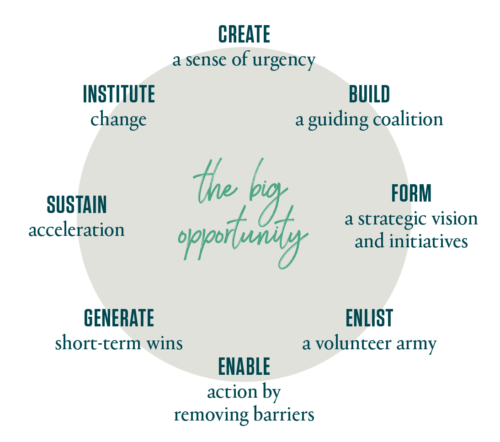 Figure 1: Kotter’s 8-steps Change Model (Kotter 2016)
Figure 1: Kotter’s 8-steps Change Model (Kotter 2016) Figure 2: Ford Motor Company CEO Alan Mulally (Ayres 2014)
Figure 2: Ford Motor Company CEO Alan Mulally (Ayres 2014)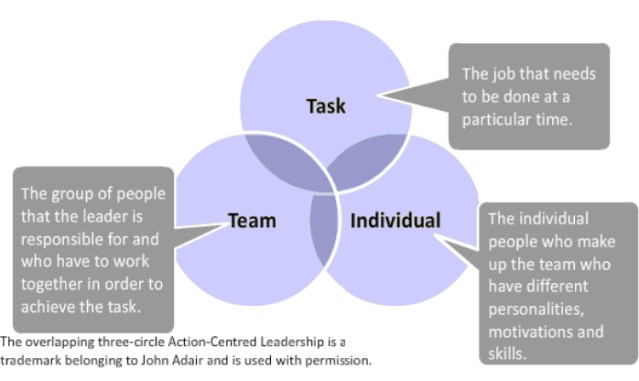 Diagram 1: John Adair’s Action-Centred Leadership Model (Yisrael 2015)
Diagram 1: John Adair’s Action-Centred Leadership Model (Yisrael 2015) Figure 1: Lei Jun and his management team (Chan 2017)
Figure 1: Lei Jun and his management team (Chan 2017)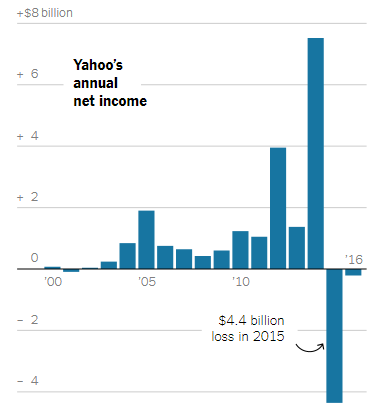 Diagram 2: Annual Net Income of Yahoo (Russell and Goel 2016)
Diagram 2: Annual Net Income of Yahoo (Russell and Goel 2016) Diagram 3: Johari Windows (Rogel 2017)
Diagram 3: Johari Windows (Rogel 2017)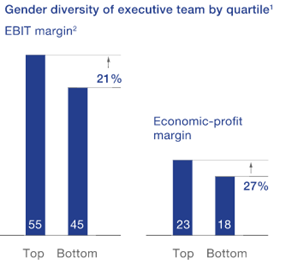
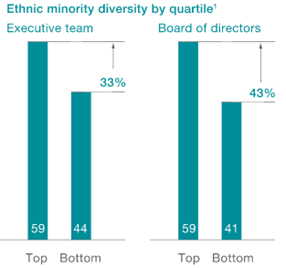
 Graph 1: Statistic of working women experienced gender discrimination at the workplace (Parker & Funk 2017).
Graph 1: Statistic of working women experienced gender discrimination at the workplace (Parker & Funk 2017). Graph 2: Tuckman’s Team & Group Development Model (Elsey 2014)
Graph 2: Tuckman’s Team & Group Development Model (Elsey 2014) Figure 1: Colgate-Palmolive internship program with a diverse team (Glassdoor n.d.)
Figure 1: Colgate-Palmolive internship program with a diverse team (Glassdoor n.d.)